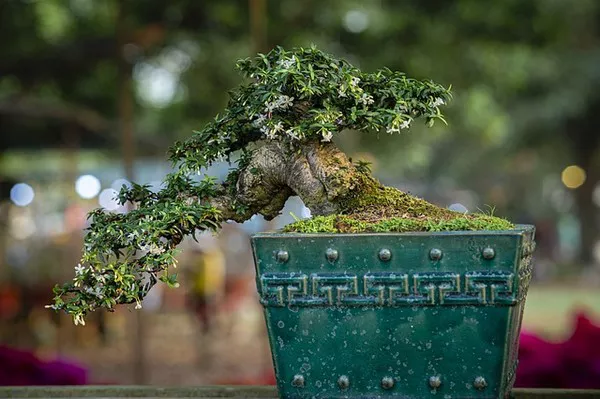In the world of horticulture, few practices encapsulate the fusion of art and nature as beautifully as the art of bonsai. Originating in China over a thousand years ago before finding its zenith in Japan, bonsai has captivated enthusiasts worldwide with its meticulous cultivation of miniature trees. Beyond being mere ornamental plants, bonsai trees embody a profound connection to the natural world and a testament to the patience, skill, and artistic vision of their caretakers. In this comprehensive guide, we delve into the rich history, techniques, and cultural significance of bonsai, exploring the art form that celebrates harmony, balance, and the beauty of nature in miniature.
Origins and Evolution
The roots of bonsai trace back to ancient China, where miniature landscapes, known as penjing, were cultivated as symbols of harmony between humans and nature. These early iterations of bonsai were revered for their symbolic representations of the natural world, often incorporating miniature trees, rocks, and water elements to evoke entire landscapes in miniature form. As Chinese culture and traditions spread to neighboring regions, so too did the practice of cultivating miniature trees.
It was in Japan, however, where bonsai truly flourished and evolved into the art form we recognize today. Influenced by Chinese penjing, Japanese practitioners refined the techniques of bonsai cultivation, imbuing it with their own cultural sensibilities and aesthetic principles. By the medieval period, bonsai had become a cherished art form among Japanese aristocracy and Buddhist monks, who saw in these miniature trees a reflection of the divine and a means of cultivating mindfulness and spiritual harmony.
Philosophy and Aesthetics
At the heart of bonsai lies a profound philosophy that emphasizes harmony, balance, and the passage of time. Central to this philosophy is the concept of wabi-sabi, a Japanese aesthetic principle that celebrates the beauty of imperfection and impermanence. In bonsai, this is manifested through the careful cultivation of trees to evoke the essence of age, with gnarled trunks, weathered bark, and asymmetrical branches conveying a sense of venerable wisdom and natural beauty.
The art of bonsai also draws heavily from the principles of Zen Buddhism, which emphasizes mindfulness, simplicity, and the interconnectedness of all things. Through the meticulous care and cultivation of bonsai trees, practitioners seek to cultivate a sense of inner peace and tranquility, connecting with the rhythms of nature and finding beauty in the smallest of details.
Cultivation Techniques
Cultivating a bonsai tree is a labor of love that requires patience, skill, and a deep understanding of horticulture. While there are countless species of trees that can be trained as bonsai, some of the most popular varieties include pine, maple, juniper, and ficus. Regardless of the species, the process of bonsai cultivation typically follows a set of fundamental techniques:
1. Pruning: Pruning is perhaps the most essential technique in bonsai cultivation, allowing practitioners to shape the tree’s growth and maintain its miniature proportions. By selectively removing branches and foliage, bonsai artists can create the illusion of age and balance within the tree’s design.
2. Wiring: Wiring is used to manipulate the shape and position of branches, allowing practitioners to achieve the desired aesthetic balance and symmetry in their bonsai trees. Care must be taken to avoid damaging the tree’s delicate bark and branches, making wiring a skill that requires practice and precision.
3. Repotting: Regular repotting is essential for maintaining the health and vitality of bonsai trees, as it allows for the replenishment of nutrients in the soil and prevents root-bound growth. During the repotting process, the tree’s roots are carefully pruned and repositioned within a fresh soil mix, promoting healthy growth and development.
4. Watering and Fertilizing: Proper watering and fertilization are crucial for ensuring the long-term health and vigor of bonsai trees. While the specific needs of each tree may vary depending on factors such as species, climate, and season, it’s essential to strike a balance between providing adequate hydration and preventing waterlogged soil.
5. Styling: Styling is where the artistic vision of the bonsai practitioner truly shines, as it involves shaping the tree to evoke a sense of natural beauty and harmony. Whether aiming for a formal upright style, a windswept silhouette, or a cascading cascade, each bonsai tree is a unique expression of its caretaker’s creativity and skill.
Cultural Significance
Beyond being objects of aesthetic beauty, bonsai trees hold deep cultural significance in many societies, particularly in East Asia. In Japan, bonsai is celebrated as a symbol of resilience, patience, and the enduring beauty of nature. Bonsai exhibitions and competitions attract enthusiasts from around the world, who gather to admire and celebrate the artistry of these miniature masterpieces.
In China, bonsai remains intertwined with traditional cultural practices such as Taoism and Confucianism, where it is revered as a symbol of harmony and balance. Chinese bonsai masters continue to draw inspiration from ancient traditions while embracing new techniques and innovations in the art of cultivation.
In the West, bonsai has experienced a surge in popularity in recent decades, as enthusiasts seek to embrace its meditative qualities and reconnect with nature in an increasingly urbanized world. Bonsai clubs and societies abound, offering a sense of community and camaraderie among practitioners of all skill levels.
Conclusion
In the world of bonsai, every tree tells a story—a story of patience, perseverance, and the enduring beauty of nature. From its humble origins in ancient China to its modern-day resurgence as a beloved art form enjoyed by enthusiasts worldwide, bonsai continues to captivate and inspire with its timeless elegance and profound philosophy. As we cultivate these miniature masterpieces, we are reminded of the interconnectedness of all living things and the enduring power of beauty to transcend the bounds of time and space. In the delicate balance of branch and leaf, root and soil, we find not only serenity but a profound sense of wonder at the majesty of the natural world, captured in miniature for all eternity.


